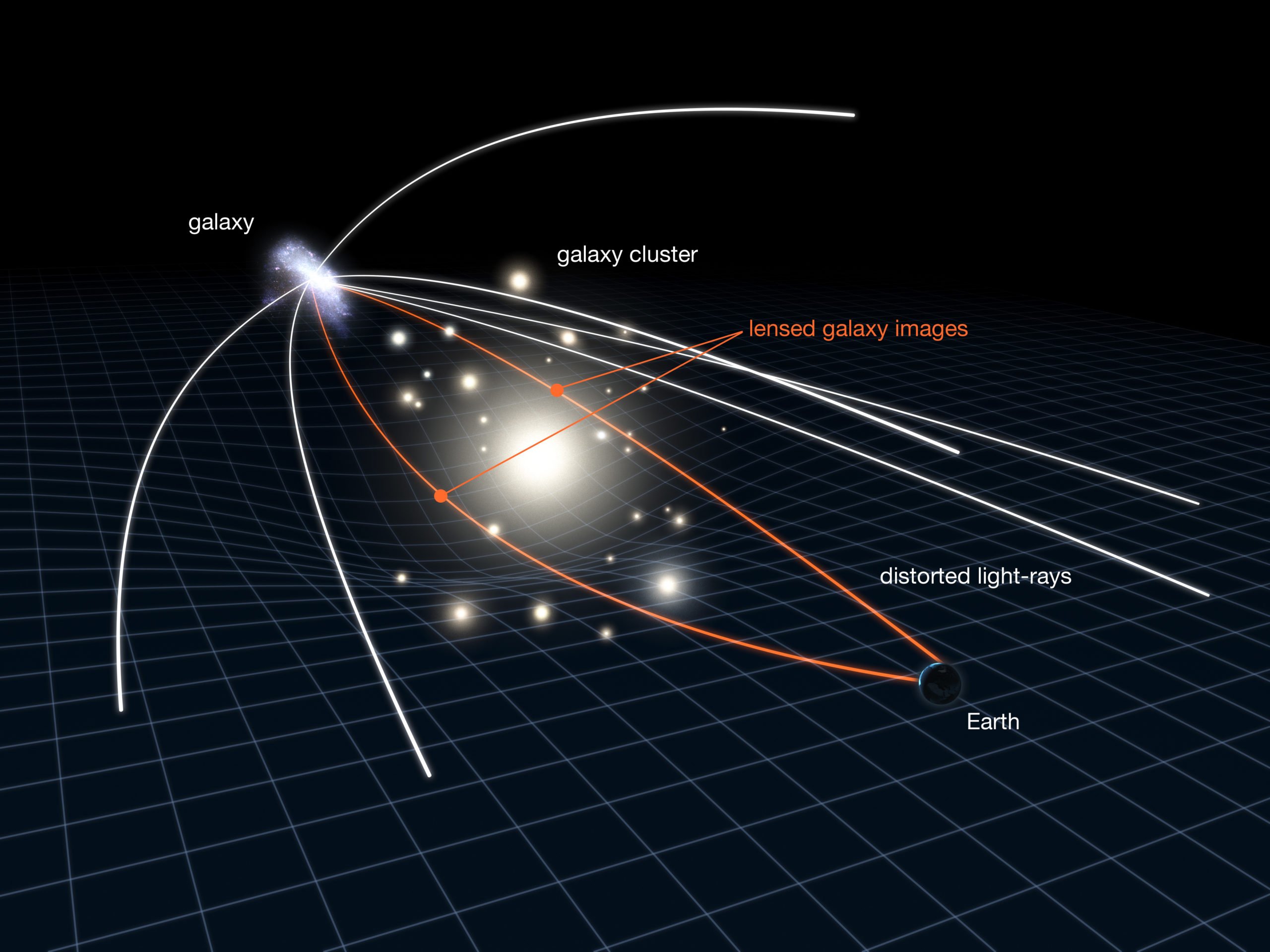Galaxy is the smallest ever discovered at this distance—around 500 million years after the Big Bang.
Supported by the U.S. National Science Foundation and using first-of-their-kind observations from the James Webb Space Telescope, a University of Minnesota Twin Cities-led team looked more than 13 billion years into the past.
There, the researchers discovered a unique, minuscule galaxy that generated new stars at an extremely high rate for its size.
A look more than 13 billion years into the past at a minuscule galaxy present shortly after the Big Bang. Image credit: ESA/Webb, NASA & CSA, P. Kelly
The galaxy is one of the smallest ever found at this distance and could help astronomers learn more about galaxies that existed shortly after the universe came into existence. The researchers made use of a phenomenon called gravitational lensing, in which the light from a distant galaxy is deflected as it passes by a strong gravitational field.
The process can generate multiple images of a distant galaxy while simultaneously increasing its brightness and, in effect, enhancing a telescope’s ability to detect exceedingly faint objects. In this discovery, gravitational lensing allowed James Webb to see a distant object—which otherwise would have been too faint. The results are published in Science.
“This galaxy is far beyond the reach of all telescopes except the James Webb, and these first-of-their-kind observations are spectacular,” said Patrick Kelly, senior author of the paper.

A University of Minnesota Twin Cities-led team looked more than 13 billion years into the past to make their discovery. Image credit: ESA/Webb, NASA & CSA, P. Kelly
“We’re able to see most of the way back to the Big Bang. We’ve never looked at galaxies when the universe was this young in this level of detail. The galaxy’s volume is roughly a millionth of the Milky Way’s, but we can see that it’s still forming the same number of stars each year.”
The James Webb telescope can observe a wide enough field to image an entire cluster at once. The researchers were able to find and study this new, tiny galaxy because of a phenomenon called gravitational lensing; mass, such as that in galaxies or their clusters, bends and magnifies light.
A cluster lens caused this small background galaxy to appear 20 times brighter than it would if the cluster were not magnifying its light.
The researchers then used spectroscopy to measure how far away the galaxy was, in addition to some of its physical and chemical properties.
Studying galaxies that were present when the universe was much younger can help scientists understand the transition from an opaque sea of fundamental particles, the so-called “dark ages” of the universe, to the emergence of the first stars and galaxies.
Explainer: What is a galaxy cluster lens?
A galaxy cluster lens, also known as a gravitational lens, refers to a phenomenon in astrophysics where the gravitational field of a massive cosmic cluster bends and distorts the path of light passing through it. This distortion can act as a natural lens, magnifying and bending the light from more distant objects located behind the cluster.
According to Einstein’s theory of general relativity, gravity can curve the fabric of spacetime. When a massive object, such as a galaxy cluster, is present, it creates a gravitational field that can bend the path of light passing nearby. This bending effect becomes significant when the gravitational field is extremely massive, such as in the case of a galaxy cluster.

Gravitational lensing is used by astronomers to study very distant and very faint cosmic objects. Image courtesy of NASA, ESA & L. Calçada
The gravitational lensing effect can produce various observable phenomena:
- Strong Lensing: In this situation, the light passing through the galaxy cluster is significantly distorted, resulting in the formation of multiple images, arcs, or even complete rings (called Einstein rings) around the cluster. These distorted images are actually the light from a single distant object that is being magnified and bent by the gravitational field of the cluster.
- Weak Lensing: it refers to a more subtle effect where the gravitational field of the galaxy cluster causes a slight distortion in the shapes of cosmic background objects. By analyzing the statistical properties of these distortions, astronomers can infer the mass distribution and dark matter content of the galaxy cluster.
- Microlensing: this effect occurs when individual stars within a galaxy cluster act as gravitational lenses. This effect can produce temporary brightenings of background stars as the lensing star passes in front of them.
Galaxy cluster lenses provide valuable information about the distribution of dark matter within the cluster and allow astronomers to study objects that would otherwise be too faint or distant to observe directly. They serve as natural telescopes, magnifying and revealing details about the universe’s distant and faint sources.
Source: NSF

